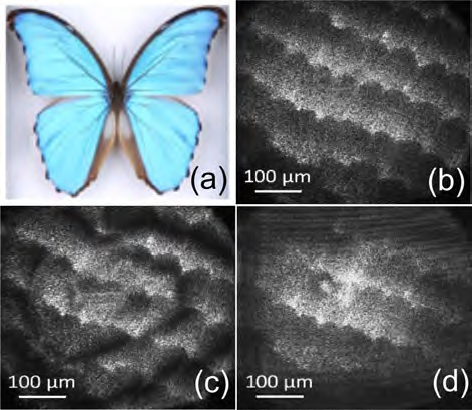Participation at EGAS52 Conference
16/07/2021H. Skenderović presented work on Imaging on biological samples at EGAS conference, virtually held from 6th to 8th of July 2021.
Authors: H. Skenderović, D. Abramović, N. Demoli, and D. Pantelić 3
Addresses: 1. Institute of Physics, Bijeniˇcka cesta 46, 10000 Zagreb, Croatia
2. Institute of Physics Belgrade, University of Belgrade, Photonics Center, Pregrevica 118, 11080 Zemun, Belgrade, Serbia
For some time, there are efforts to apply the natural biological structures as imaging detectors by using
thermally-induced effects[1-3]. The read-out of those possible devices is usually all optical i.e., instead of electronic
signal read from CCDs, the image information would come from light beam interaction with the sensitive
area – focal point array (FPA). The foreseen advantage is multispectral sensitivity of such devices. As a most precise
method for detecting sub micron changes on FPA one could use holography, as in [1]. In a possible practical
implementation of this approach, artificail nanostructures will be fabricated inspired by biological samples.
In this work we present optical reading from butterfly wings by means of digital holographic microscopy in a
compact Twyman – Green configuration where wings scales are used as pixels of the FPA. By shining the auxilliary
laser on the wing, individual scales are excited. We show spatial and temporal sensitivity of the setup with wings.
As a next step artificial nanostructures in a role of FPA will be investigated, and integrated in a compact imaging
device.

Fig. 1: Image of butterfly Morpho Peleides (a). Holographic reconstruction of the wing scales (b). Reconstruction
of the wing excited by auxiliary laser beam (c) and (d)
Image of a typical butterfly is shown in Fig.1(a). The FPA in our case consists of wing scales which are imaged
from the wing area sized approximately 600×600 μ2. Individual scales can be clearly seen. Excitation of several
pixels by impeding light is shown in the Fig.1.(c) and almost single pixel excitation is reconstructed in Fig.1(d).
Additionally, we discuss temporal response of the wings. This research should give guidelines for nanofabrication
of practical FPAs inspired by architecture designed by nature.
References
[1] D. Grujic, D. Vasiljevic, D. Pantelic, L. Tomic, Z. Stamenkovic, and B. Jelenkovic, Opt. Express 26, 14143-14158 (2018)
[2] A. D. Pris, Y. Utturkar, C. Surman, W. G. Morris, A. Vert, S. Zalyubovskiy, T. Deng, H. T. Ghiradella, and R. A. Potyrailo, Nat.Photonics
6(3), 195–200 (2012)
[3] F. Zhang, Q. Shen, X. Shi, S. Li, W. Wang, Z. Luo, G. He, P. Zhang, P. Tao, C. Song, W. Zhang, D. Zhang, T. Deng, and W. Shang,
Adv.Mater. 27(6), 1077–1082 (2015)
